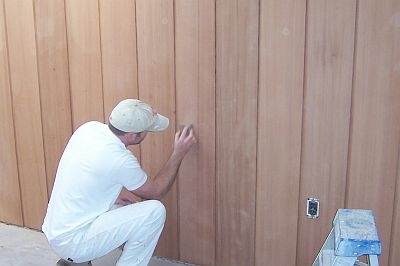It has been said that the start makes the finish and sanding wood is the start of a beautiful finish. Before any wood stain or clear finish can be applied you must properly prepare the surface by sanding.
Every professional painter and refinisher has his or her own preferences about how to sand, but they all agree about its importance. There are a couple of good reasons for sanding wood that go beyond simply smoothing a surface.
Remove the Mill Glaze to Finish New Wood
New wood trim can have a shiny look, called a mill glaze. The mill process, which creates the wood trim profile, produces this glaze as the blades cut the wood into the finished shape.
Mill glaze will prevent a stain or finish from penetrating the wood if it is not removed. Sanding new wood removes the glaze and allows wood stains and finishes to work.
Chemical Stripping is Imperfect for Refinishing Old Wood
Chemical stripping always leaves a little finish behind. As effective as paint stripping is, it is not perfect. There will always be some of the paint or previous finish still on the wood, even after the most thorough paint stripping. Sanding is the only way to remove all remaining finish.
Fix Imperfections
Sanding is an important step in restoring wood, because it can remove scratches or cuts a piece of wood may have endured over time. The sanding process evens out the wood so that minor flaws in the wood disappear and also do not interfere with the wood refinishing.
Allow the Stain and Finish to Penetrate
Scraping a wood paint or finish away or using a wood plane will close the pores of wood by crushing the fibers. Sanding the wood opens these pores, helping the finish to penetrate evenly.
Sanding also creates tiny, invisible scratches on the surface that enhance the bond of non-penetrating finishes. After sanding wood, a stain and finish will permeate the wood and give it the look you want.
Sanding is important for a successful wood-refinishing project. It helps remove the shiny mill glaze of new wood or the remnants of paint stripping for older wood. Sanding fixes imperfections that may be in the wood and allows the stain and finish to penetrate the wood. All of these benefits make wood sanding a step in refinishing wood that cannot be overlooked.


